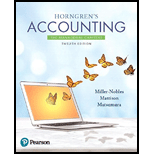
Common-size Income Statement: Income statement is a part of financial statements that reports the income and expenses of the business in an accounting period. When those income and expenses are not listed with actual amount but only as the percentage of total revenue than it is called common size income statement.
Common-size
Gross Profit Percentage: This ratio evaluates the profitability of each dollar of sale. Gross profit is first step toward the profitability so companies are very keen to have a higher gross profit percentage. It enables them to cover the operating expenses related to business.
Profit Margin Ratio: Profit margin ratio reflects the portion of net income in the net sales. It is a profitability measure tool that is used to evaluate the net income a business earns on every dollar of net sales. It is computed as net income divided by net revenue.
Debt to Equity Ratio: This ratio reflects the relationship of company’s total liabilities to total equity. It is used to represent financial leverage in the business. Higher ratio means that the company has used debts more than the owner’s capital to acquire the assets.
1.
To Prepare: The common size income statement and balance sheet of R Company
2.
(a).
To Compute: The gross profit percentage of R Company for the year ended December 31, 2018.
(b).
To Compute: The profit margin ratio of R Company for the year ended December 31, 2018.
3.
(a).
To Compute: The current ratio of R Company for the year ended December 31, 2018.
(b).
To Compute: The debt to equity ratio of R Company for the year ended December 31, 2018.
Want to see the full answer?
Check out a sample textbook solution
Chapter 17 Solutions
Horngren's Accounting: The Managerial Chapters (12th Edition) (loose Leaf Version)
- Accurate Answerarrow_forwardWhat is the final selling price to the consumer of this financial accounting question?arrow_forwardA company uses the FIFO method for inventory costing. At the start of the period the production department had 36,000 units in beginning Work in Process inventory which was 48% complete; the department completed and transferred 173,000 units. At the end of the period, 30,000 units were in the ending Work in Process inventory and are 75% complete. The production department had labor costs in the beginning goods in process inventory of $107,000 and total labor costs added during the period are $727,150. Compute the equivalent cost per unit for labor.arrow_forward
- Get correct solution this general accounting questionarrow_forwardMC Company made sales to two customers. Both sales were on credit terms of 2/10, n/30. Customer A purchased $30,000 of goods, returned none, and paid in 9 days. Customer B purchased $40,000 of goods, returned, and was given credit for $4,000 of goods and paid in 25 days. What was the net revenue from these two customers?a. $70,000 b. $66,000 c. $65,400 answerarrow_forwardCompute the manufacturing overhead rate for the yeararrow_forward

 AccountingAccountingISBN:9781337272094Author:WARREN, Carl S., Reeve, James M., Duchac, Jonathan E.Publisher:Cengage Learning,
AccountingAccountingISBN:9781337272094Author:WARREN, Carl S., Reeve, James M., Duchac, Jonathan E.Publisher:Cengage Learning, Accounting Information SystemsAccountingISBN:9781337619202Author:Hall, James A.Publisher:Cengage Learning,
Accounting Information SystemsAccountingISBN:9781337619202Author:Hall, James A.Publisher:Cengage Learning, Horngren's Cost Accounting: A Managerial Emphasis...AccountingISBN:9780134475585Author:Srikant M. Datar, Madhav V. RajanPublisher:PEARSON
Horngren's Cost Accounting: A Managerial Emphasis...AccountingISBN:9780134475585Author:Srikant M. Datar, Madhav V. RajanPublisher:PEARSON Intermediate AccountingAccountingISBN:9781259722660Author:J. David Spiceland, Mark W. Nelson, Wayne M ThomasPublisher:McGraw-Hill Education
Intermediate AccountingAccountingISBN:9781259722660Author:J. David Spiceland, Mark W. Nelson, Wayne M ThomasPublisher:McGraw-Hill Education Financial and Managerial AccountingAccountingISBN:9781259726705Author:John J Wild, Ken W. Shaw, Barbara Chiappetta Fundamental Accounting PrinciplesPublisher:McGraw-Hill Education
Financial and Managerial AccountingAccountingISBN:9781259726705Author:John J Wild, Ken W. Shaw, Barbara Chiappetta Fundamental Accounting PrinciplesPublisher:McGraw-Hill Education





